
Groundbreaking footage shows how hammerhead sharks get their hammers
Hammerhead sharks are named that for a fairly obvious reason, but now groundbreaking footage has emerged which shows exactly how their unique head shape occurs. The strange-looking hammerhead shark has a very broad nose and spaced-out eyes that lend to its name and make it one of the most bizarre-looking sharks out there. Scientists studying the creature have until now had no idea how their hammers form, but now researchers have gotten a glimpse thanks to new footage. The species’ embryonic development is notoriously hard to study as they don’t lay eggs, so experts instead have been helped by the bonnethead sharks (Sphyrna tiburo), the smallest hammerhead species which is commonly found in estuaries and waters in the Gulf of Mexico and the Western North Atlantic Ocean. In a study published in Developmental Dynamics, researchers looked at embryos that had been preserved from bonnetheads that had been caught in previous studies to ensure that no additional sharks were affected. They studied embryos of the sharks at different stages of their development and witnessed as the shark's head started to form its unique shape. Hammerhead Transformation www.youtube.com The team found that the bonnetheads develop their head early on in their development, but the hammer doesn’t begin to form until around halfway through their gestation when the cartilage that forms the hammer begins to expand from the nasal area. The lead author, Steven Byrum, explained: “It’s the perfect qualities of the bonnethead that allowed us [to] do it with this species. “This was a unique opportunity we may not be able to get for very much longer with bonnetheads and may not be able to get in any other species of hammerhead.”
2023-10-02 19:54
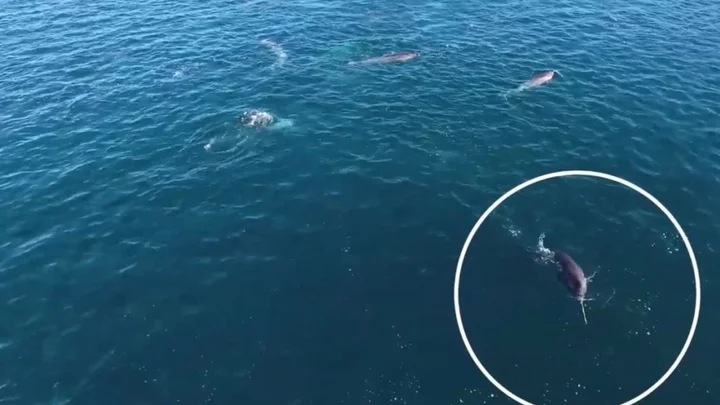
There's a sinister reason why you never see narwhals in aquariums
Narwhals are among the most elusive creatures in the ocean, with their long, spiralling tusks giving them an almost mythological quality. And whilst many people would pay good money to see these unicorns of the sea in the flesh, they are notably absent from the world’s aquariums. The reason for this is both dark and mysterious, since there have only been two attempts to keep the toothed whales in captivity. Both of these ended in tragedy and the general acceptance that narwhals simply don’t belong in our sealife centres. The legendary porpoises, which are related to belugas and orcas, are found in Arctic coastal waters and rivers. They have two teeth and, in males, the more prominent of these grows into the swordlike tusk which can be up to 10 feet long, according to National Geographic. Back in 1969, Coney Island’s New York Aquarium becoming the first-ever centre to put a narwhal on display. According to IFL Science, the aquarium became home to a young calf called Umiak, whose name referred to the canoe used to hunt the species in the High Arctic. It was captured by members of the Inuit community who said that it followed their canoe back to camp after they killed its mother for meat. Umiak was put in a tank alongside a female “white whale” (most likely a beluga), who acted as its stepmother. And although staff reportedly fed vast quantities of milk mixed with chopped clams to keep it happy, they weren’t able to keep it healthy. Less than a year after Umiak arrived at the centre, the orphaned narwhal died of pneumonia, as reported by The New York Times at the time. Still, the animal’s swift and tragic demise didn’t stop Canada’s Vancouver Aquarium from attempting the same feat in 1970. The aquarium had been gearing up to host a narwhal since 1968, when its director, Murray Newman, hoped that bringing narwhals to the city could generate interest in the species and help with its conservation, IFL Science reports. After two unsuccessful attempts to capture one of the whales themselves, Newman and his team were forced to buy a young male from a community of Inuit hunters based in Grise Fiord on Canada’s Ellesmere Island. The animal was reportedly called Keela Luguk – a phonetic spelling of the word “qilalugaq”, which means “narwhal” in some Inuktitut dialects. Within a week of Keela Luguk’s arrival at Vancouver Aquarium in August 1970, the centre had caught two female narwhals and three calves, which were then added to his tank. However, in less than a month, the three calves had died. And by November, the two females were also gone. As public outrage mounted, the mayor of Vancouver himself called for Keela Luguk to be returned to the wild. But Newman would not succumb to their pressure and, eventually, on 26 December that same year, the young whale was reported to have died too. It’s not known exactly why the narwhals fared so dismally in captivity, particularly given that the species’s closest relative, the beluga, can survive a number of years, or even decades, in aquarium facilities. However, the porpoises are known to be exceptionally sensitive animals, with studies finding that they are so affected by human-made noises that even the sound of a ship sailing near their habitat is enough to radically impact their behaviour. Fortunately, aquariums seem to have got the memo, and narwhals have largely been left to continue their lives as fabled enigmas of the sea. Sign up for our free Indy100 weekly newsletter Have your say in our news democracy. Click the upvote icon at the top of the page to help raise this article through the indy100 rankings.
2023-10-02 19:29

New text adventure ‘The Smiths are Dead’ sees Morrissey battle to record first solo single!
Nearly 40 years after he split from The Smiths, a new text adventure called ‘The Smiths are Dead’ has launched for the Commodore 64 that puts players in singer Morrissey‘s shoes as he attempts to record his first solo single.
2023-10-02 19:17
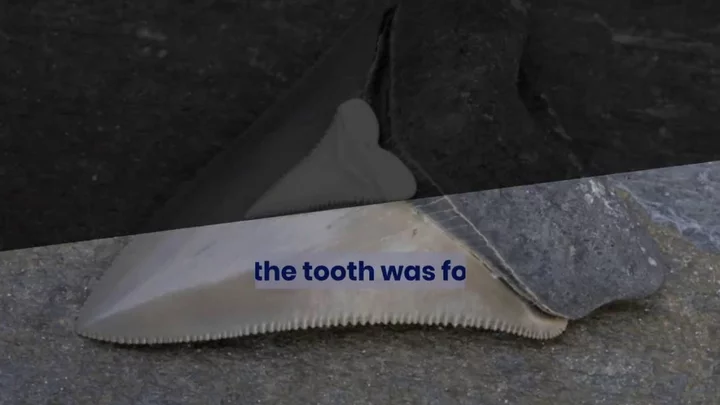
Divers discover Megalodon teeth in flooded cave in Mexico
Divers in Mexico have discovered Megalodon teeth in a flooded inland cave and the findings have confirmed scientific beliefs. Megalodons were absolutely gigantic prehistoric sharks that reached sizes of up to 50 feet long. They dominated the oceans before going extinct around 3.6 million years ago. Scientists are interested in studying fossils of the huge sea creature, with the animal's teeth proving the most abundant type of fossil to be found today. Teeth fossils were found in Mexico by speleologist (cave specialist) and photographer Kay Nicte Vilchis Zapata and fellow speleologist Erick Sosa Rodriguez while diving in a newly discovered sinkhole in Cholul in 2019. The cenote is 400 meters long and 28 meters deep and located inside were fifteen teeth fossils from various shark species. They also discovered human remains and a vertebrae fossil that potentially belongs to an ancient species. A total of 13 of the 15 teeth fossils belonged to three different species of shark – one being the megalodon (Carcharocles megalodon), while the other two species were the mackerel shark (Isurus oxyrinchus) and the sawshark (Pristiophoridae). Zapata told local media at the time: “We were looking at the wall and suddenly I saw a little something, I went closer and I saw that it was a tooth, that was the first and apparently it belonged to a sawshark.” Experts believe the geological timescale of the megalodon teeth lies anywhere between 2.5 million to 5 million years old. Speleologist Sosa Rodriguez said: “It is just proof of what scientists have already studied and written about; what kind of wildlife lived here millions of years ago when this was part of the sea.” Scientists have suggested that the megalodon’s warm body temperature may have been the reason for its extinction. There is some thought that the megalodon was able to maintain a body temperature around 7 degrees centigrade warmer than the water around it, but ultimately this may have been its downfall. Randy Flores, a UCLA doctoral student and fellow of the Centre for Diverse Leadership in Science, explained: “Maintaining an energy level that would allow for megalodon’s elevated body temperature would require a voracious appetite that may not have been sustainable in a time of changing marine ecosystem balances when it may have even had to compete against newcomers such as the great white shark.” Sign up to our free Indy100 weekly newsletter Have your say in our news democracy. Click the upvote icon at the top of the page to help raise this article through the indy100 rankings.
2023-10-02 17:54

Dutch regulator rejects Apple’s objections against fines
AMSTERDAM Dutch competition watchdog ACM on Monday said it had rejected objections by Apple against fines of 50
2023-10-02 15:56
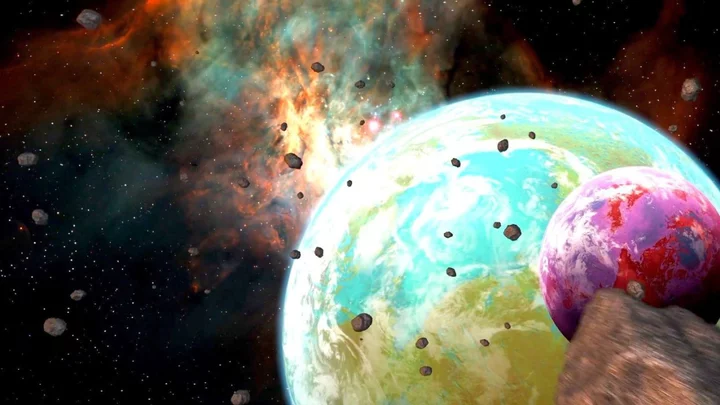
Scientists now say finding alien life in the universe is 'only a matter of time'
Scientists are optimistic about the possibility of finding life on other planets. Nasa's James Webb Space Telescope (JWST) found a possible sign of a gas that, on Earth, is produced by simple marine organisms. It was detected this month in the atmosphere of a planet named K2-18b, which is 120 light years away. The planet is in what astronomers call ''the Goldilocks zone' - the right distance away from its star for the surface temperature to be neither too hot nor too cold, but just right for there to be liquid water, which is essential to support life. The team expects to know in a year's time whether the hints are confirmed or have gone away. "We live in an infinite Universe, with infinite stars and planets. And it's been obvious to many of us that we can't be the only intelligent life out there," Prof Catherine Heymans, Scotland's Astronomer Royal told the BBC. "We now have the technology and the capability to answer the question of whether we are alone in the cosmos." Prof Nikku Madhusudhan of the Institute of Astronomy at Cambridge University, who led the study, told the BBC that if the hints are confirmed "it would radically change the way we think about the search for life". "If we find signs of life on the very first planet we study, it will raise the possibility that life is common in the Universe." He predicted that within five years there will be "a major transformation" in our understanding of life in the Universe. If his team don't find life signs on K2-18b, they have 10 more Goldilocks planets on their list to study - and possibly many more after that. Even finding nothing would "provide important insights into the possibility of life on such planets", he said. Meanwhile there are other separate projects all looking for signs of life in the universe. Pretty exciting. Sign up to our free Indy100 weekly newsletter Have your say in our news democracy. Click the upvote icon at the top of the page to help raise this article through the indy100 rankings.
2023-09-30 23:28

xScreen Is Now an Officially Licensed Portable Display for Xbox Series S
Xbox Series S owners now have the option of a "Designed for Xbox" portable screen,
2023-09-30 00:49

Has Facebook changed its blue logo?
Facebook is known for its recognisable 'f' logo using the colours light navy blue and white - however, people can't help but notice something different. Some have noticed that once logged into their account there has been a slight tweak to the blue colour they have been familiar with in recent years. The new blue announced by the social media platform is richer, bold and darker in a move which is "Redefining Facebook’s brand identity." “We’re excited to launch the first phase of a refreshed identity system for Facebook, with a focus on fostering effortless, self-initiated exploration and connection across every touchpoint," the announcement read. There were three "key drivers" in regards to the brand design update which include: "Elevate the most iconic elements of our brand to create a distinctive, refreshed Facebook." The second is to "Unify how the Facebook brand comes to life across product-to-marketing experiences." On the topic of blue tone change, this came from wanting to "create an expansive set of colours — anchored in our core blue — that is comprehensive and vibrant, and also designed to be more accessible for people." Of course, Facebook users couldn't help but notice the colour change and took to social media to question if their eyes were deceiving them. Elsewhere, a Mark Zuckerberg product has been deemed the 'cringiest AI of all time'. Sign up to our free Indy100 weekly newsletter Have your say in our news democracy. Click the upvote icon at the top of the page to help raise this article through the indy100 rankings.
2023-09-29 22:18

This is what cannabis does to your body minute by minute
Debates around the legalisation of cannabis have existed for years, with cannabis currently considered a class B drug in the UK. This means you can be prosecuted with up to five years in prison or a fine of up to £2,500 if you're found in possession of it. Different factors can affect how cannabis will affect you. For example, smoking weed will meant the effects kick in a lot faster than if you were to take an edible. Age, height, weight, and tolerance levels can also change how you experience the effects of cannabis. However, here's a quick breakdown of how cannabis effects you, minute-by-minute: It can take anywhere between 2 and 10 minutes for the effects of smoking weed to kick in. However, according to Healthline if you take an edible, you could be waiting for half an hour to two hours before you start to feel the effects. One of the first effects you'll begin to feel is an increase in pulse rate. WebMD suggests that your heart rate can rise by 20 to 50 bears from the normal rate of 50 to 70 bears per minute. Your heart rate can stay at the increased rate for up to 3 hours after you use cannabis. Next, the blood vessels in your eyes will dilate, likely turning your eyes red as a result. If you smoked the cannabis, the THC (the main psychoactive compound in cannabis) will be fully absorbed into your blood around the 20-minute mark. However, if you took an edible this takes longer due to the THC needing to be absorbed by your liver. The body's neural chemistry can be altered once the THC is fully settled in your system, stimulating the part of your brain that responds to pleasure. This releases dopamine, resulting in the relaxed state often associated with smoking weed. However, some individuals can also feel anxious and have a panic attack as a result. Around this time is when you'll be hit with the 'munchies'. This is because the THC finds the olfactory bulb (which impacts your sense of taste and smell) in you brain, and can convince you that you're hungry, even if you're not. Roughly 30-minutes in is when the effects reach its peak, lasting up to five or six hours. You may begin to feel sleepy or confused, as well as getting the giggles. Depending on the strain of THC used, these effects can last longer, resulting in lasting impaired judgement. Although the effects mostly wear off within a few hours, traces of cannabis can still be prevalent in a urine test two or three days later. Sign up to our free Indy100 weekly newsletter Have your say in our news democracy. Click the upvote icon at the top of the page to help raise this article through the indy100 rankings.
2023-09-29 20:18

Mark Zuckerberg's latest AI product has been deemed 'cringiest AI of all time'
Mark Zuckerberg, CEO of Meta, revealed its latest AI product containing quite a few familiar faces, but people are unimpressed. On Wednesday at Meta's Connect conference, Zuckerberg unveiled Meta's new AI assistant at its headquarters in Menlo Park, California. The digital assistant has drawn comparisons to ChatGPT, where the program generates in-depth and detailed answers to text queries. What makes it different from other AI assistants, however, is that the assistants have faces of celebrities such as Paris Hilton, Kendall Jenner, and Mr. Beast. The various celebrities partnered with Meta to introduce its "cast of characters". For example, Billie - portrayed by Kendall Jenner - is described as your "No-BS, ride-or-die companion". Roy Choi, a Korean-American chef, plays Max, a "seasoned sous chef for culinary tips and tricks". Each character has also been given their own profile on Instagram and Facebook. Zuckerberg posted the announcement in a video to his Instagram and Facebook profiles, involving him and his family displaying their poor acting skills, as well as Kendall Jenner, Tom Brady, Charli D'Amelio, Snoop Dogg, and Dwayne Wade as their AI assistant characters. But whilst Zuckerberg seemed impressed with the new product, most viewers did not share the same sentiments. Host of Corporate Gossip podcast Becca Platsky posted her reaction to the announcement video, calling it the "cringiest AI of all time". "There's something this product gets so wrong about the way people interact with influencers," Platsky says. "And one thing is influencer snark. That drives a lot of engagement to real life influencers, but nobody's gonna snark on a robot!" She also said, "I'm also not sure how many people are going to want to give Kendall Jenner more money for doing less work." Comments under Platsky's TikTok overwhelmingly agreed. Some called it "embarrassing" whilst another user said it felt "like an SNL skit." "I feel like they think we care about celebrities more than we actually do," commented another user. The criticism didn't stop there though, with many commenting under Zuckerberg's announcement letting him now their thoughts. One user called it "depressing" and said "adding more AI to talk to on [an] everyday basis, this is just loneliness amplified." Another gave Zuckerberg the advice to "fire everyone in your staff that failed to tell you how monumentally stupid this video is." Adding, "who the hell needs to chat to AI friends that look like celebrities?" Sign up to our free Indy100 weekly newsletter Have your say in our news democracy. Click the upvote icon at the top of the page to help raise this article through the indy100 rankings.
2023-09-29 19:15
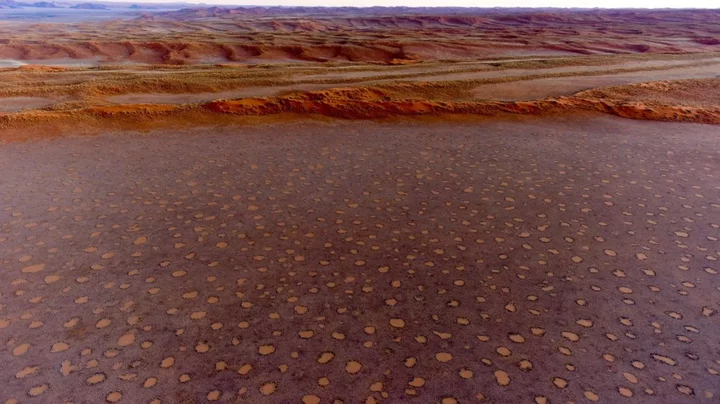
Mysterious fairy circles are increasing across the world and scientists are baffled
A natural phenomenon consisting of polka-dot-style formations has been cropping up around the world, and scientists are baffled as to why. The circular-shaped patches of ground have been seen in deserts in Australia and Namibia but now experts believe they are more widespread than originally thought. Known as “fairy circles”, there are now 263 known sites across the globe where they can be found, according to new research published in the journal Proceedings of the National Academy of Sciences (PNAS). They have been documented in 15 countries, across three continents, including the Sahel region of Africa, Madagascar, and in Middle-West Asia. And yet, despite the spread of these anomalies, scientists are still none the wiser about how they actually form. A team led by environmental scientist Emilio Guirado, of the University of Alicante in Spain, explained in their paper on the "intriguing" phenomenon: “We conducted a global and systematic assessment of fairy circle-like vegetation patterns and discovered hundreds of [fairy-circle]-like locations on three continents. “Our study provides insights into the ecology and biogeography of these fascinating vegetation patterns and the first atlas of their global distribution.” The mysterious circles appear in desert regions and can be as wide as 12 metres (39 feet) in diameter. They are almost always spaced out and rarely connect or overlap with one another. Several theories have been put forward as to what causes them, including, tiny insects, termites, and plant toxins. But, none have been accompanied by any significant evidence and some have been debunked completely. One significant factor limiting their study is they are often found in places that are difficult to access and are inhospitable. Locating the 263 different sites of “fairy circles” involved analysing high-resolution satellite imagery. Guirado and his team wrote in their paper: “[The sites] include those already identified in Namibia and Western Australia, as well as areas never described before, including the Sahel, Western Sahara, Horn of Africa, Madagascar, Southwest Asia, or Central and Southwest Australia. “By doing so, our study provides a global atlas of areas showing FC-like vegetation patterns and expands the known existence of this vegetation type to new countries and continents.” The team hopes that locating new sites will enable them to find common traits that may point towards their cause. Sign up to our free Indy100 weekly newsletter Have your say in our news democracy. Click the upvote icon at the top of the page to help raise this article through the indy100 rankings.
2023-09-29 16:21
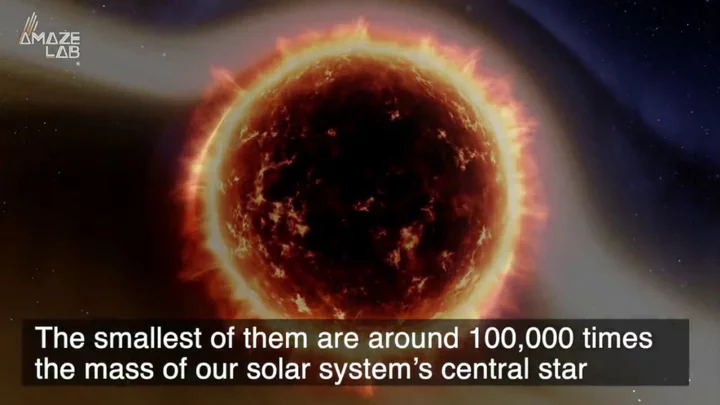
Scientists confirm that the most iconic black hole in the universe is spinning, in major new discovery
Scientists have confirmed that the first black hole to ever be captured on camera is spinning in a major new discovery. The famous doughnut-shaped M87* black hole, 6.5 billion times more massive than the sun, first drew people’s attention in 2019 for becoming the first void to be pictured. Now, it has been confirmed that the M87* black hole is spinning, but experts have yet to determine just how fast. The announcement was made on 27 September. M87* has been observed for the last two decades via a network of radio telescopes. It is located in the Messier 87 (M87) galaxy, which is around 55 million light-years away from Earth in the Virgo constellation. The instruments monitoring the black hole have observed a powerful jet of radiation and particles being expelled from its poles. According to research, the relativistic jets appeared to be on a kind of pendulum that swings every 11 years, observed over decades. Experts believe this is caused by interactions between gravitational interactions between the black hole and the material making up the disk around it. They say this provides “unequivocal evidence” that the black hole is spinning. Cui Yuzhu, a researcher at Zhejiang Lab in China and the study’s lead author explained in a statement: “We are thrilled by this significant finding,” adding, “Since the misalignment between the black hole and the disk is relatively small and the precession period is around 11 years, accumulating high-resolution data tracing M87’s structure over two decades and thorough analysis are essential to obtain this achievement.” Their findings matched with computer simulations, confirming that the jets emitting from the black hole change direction by around 10 degrees every 11 years. Sign up to our free Indy100 weekly newsletter Have your say in our news democracy. Click the upvote icon at the top of the page to help raise this article through the indy100 rankings.
2023-09-28 20:15
